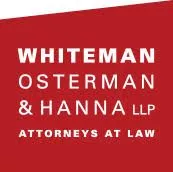- within Real Estate and Construction topic(s)
- in Europe
- with readers working within the Accounting & Consultancy, Advertising & Public Relations and Transport industries
This week, Hon. James Farrell, Acting Supreme Court Justice of the Supreme Court of the State of New York, issued a landmark decision finding that the New York State Legislature, through the enactment of Real Property Tax Law ("RPTL") § 575-b, improperly delegated authority to the Department of Taxation and Finance ("DTF"), a State agency, to create a wind and solar valuation Model (the "Model") without proper rules and instruction. Based on this ground, and following a day-long hearing, the Court determined that RPTL § 575-b, and the valuation Model it creates, are unconstitutional.
Enacted in 2021, RPTL §575-b required that the assessed value of solar and wind energy systems with a nameplate capacity equal to or greater than one megawatt be determined by a discounted cash flow approach ("DCF"). Pursuant to RPTL §575-b, DTF, in consultation with the New York State Energy Research and Development Authority and the New York State Assessors Association, were responsible for identifying, formulating, and publishing an appraisal Model and a discount rate or rates.
Petitioners, a group of town supervisors, in their official and individual capacities, and two individuals, all residing in the County of Schoharie, commenced a hybrid CPLR Article 78 and declaratory judgment action seeking a judgment declaring Real Property Tax Law ("RPTL") §575-b unconstitutional.
Petitioners raised several constitutional challenges to RPTL §575-b. First, Petitioners argued that the statute unconstitutionally infringed upon the constitutional and statutory rights and obligations of assessors to value property within their jurisdiction in a manner not to exceed full value. Second, Petitioners argued that the Legislature's enactment of RPTL §575-b is an unlawful delegation of the Legislature's taxing authority. Third, Petitioners contended that the statute violates the equal protection and due process rights of similarly situated wind and solar energy systems. Fourth, Petitioners claimed that RPTL §575-b violates the equal protection and due process rights of similarly situated renewable power generation facilities because it arbitrarily and capriciously treats them differently for real property tax assessment purposes without a rational basis for doing so. Lastly, Petitioners asserted that the statute is arbitrary and capricious because it shifts the tax burden from solar and wind energy systems with greater than one megawatt capacity to Petitioners and other taxpayers within the tax levying jurisdiction and/or results in a cut in local government services to offset the loss in tax revenue caused by implementation of the Model used under RPTL §575-b.
One of the major issues with RPTL §575-b, and the Model promulgated thereunder, was the failure of the Model to account for investment tax credits ("ITCs"), bonus depreciation and accelerated depreciation, and renewable energy credits ("RECs"). RECs and ITCs are credits awarded based on the avoidance of the emission of a gas, chemical, or other substance attributable to a renewable energy project. RECs and ITCs cannot exist unless a solar or wind energy system certified as a renewable energy generating facility produces a megawatt of energy. The REC or ITC is then minted to create a renewable energy certificate, which can be sold together with the megawatt of energy created or separately. An earlier version of the Model had initially accounted for RECs as tangible assets, but after receiving public comments, primarily from solar and wind developers and renewable energy advocates requesting that RECs not be included as part of the appraisal model, they were excluded. The Court found that the Legislature's failure to provide for what property (i.e. RECs and ITCs) should and should not be taxed and that its failure to provide sufficient direction, standards and safeguards on the imposition of taxes on solar and wind energy facilities had created confusion and disarray with respect to how RECs and ITCs should be treated. The Court found that it is the role of the Legislature, not DTF, to determine whether RECs and ITCs should be taxed and included as part of the discounted cash flow approach for valuing solar and wind energy facilities
Ultimately, the Court held that Petitioners demonstrated the invalidity of RPTL §575-b beyond a reasonable doubt, as the Legislature had abdicated its constitutional responsibility and delegated its taxing power to DTF in violation of the New York State Constitution.
The content of this article is intended to provide a general guide to the subject matter. Specialist advice should be sought about your specific circumstances.


